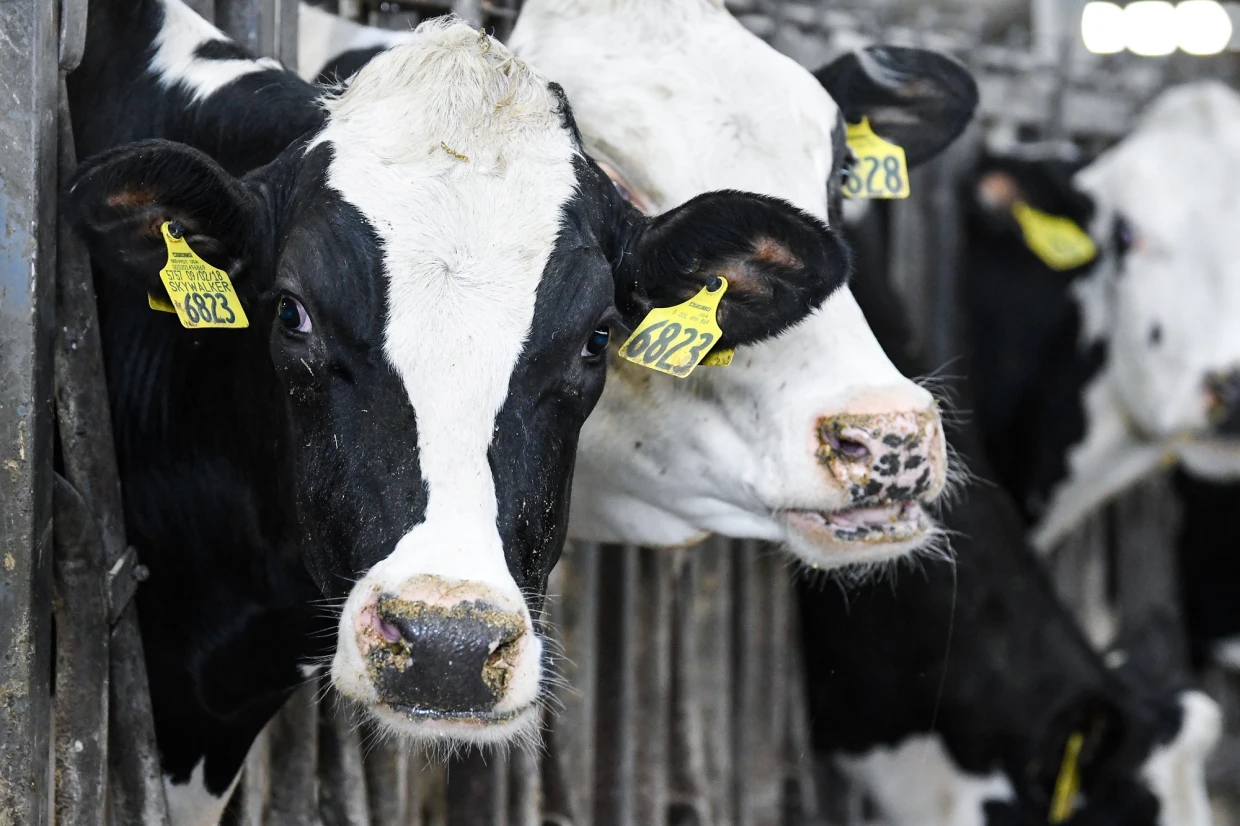The person’s infection comes just days after it was reported that dairy cattle in five states, including Texas, tested positive for the virus. A person in Texas has been diagnosed with a highly virulent strain of bird flu, the first such case since the virus was detected in a handful of dairy cattle in several states across the country last week.
The Texas Department of State Health Services said in a statement Monday that the infected person worked on a dairy farm where some cows tested positive last week for the H5N1 strain of bird flu, which is considered to be a highly pathogenic, or infectious, strain. The patient’s main symptom was pink eye.
Sid Miller, commissioner of the Texas Department of Agriculture, said it’s not yet clear whether the person was infected by a dairy cow or through the same source that infected the dairy cows, which appears to be dead waterfowl that were found on the property.
Regardless of the source, Miller said the public should not be worried.
The Centers for Disease Control and Prevention issued a similar statement Monday, saying, “This infection does not change the H5N1 bird flu human health risk assessment for the U.S. general public, which CDC considers to be low.”
Cases of this particular strain of avian flu in humans are rare but fatal in more than 50% of those infected, according to the CDC. A 21-year-old man in Vietnam died March 23 after being infected with the virus, according to a statement from the Vietnamese Ministry of Health.
The case in Texas is the second human case of this strain of bird flu ever detected in the U.S. The first case was confirmed in 2022, in a Colorado man who was a state prison inmate and exposed to the virus while working on a poultry farm as part of a pre-release employment program. The man’s only symptom was fatigue. He was treated with an antiviral and recovered, according to a CDC report.
There have also been four cases in people infected with a less virulent strain of bird flu in the U.S.; there have been more cases of both types of the virus in humans in other parts of the world, according to the CDC.
The often-deadly virus, which spreads quickly among birds, including domesticated chickens, has been spreading more rapidly among nonbird species, including polar bears, foxes and marine mammals.
The first-ever cases of the H5N1 strain in dairy cows were detected last week in Idaho, Kansas, Michigan, New Mexico and Texas. These cases came just days after goats on a farm in Minnesota tested positive for the virus, though Miller noted the cases did not appear to be spreading rapidly and that the cases in cattle were relatively isolated.
Dr. Jeff Bender, a professor of public health and public health veterinarian at the University of Minnesota in Minneapolis, said that as birds carry out their spring migrations, there will likely be more pockets of outbreaks in other animals.
“That’s what is driving what we are seeing with the cattle, as these birds are doing their spring migration, they may be shedding the virus,” Bender said, noting that the birds’ feces could contaminate animals’ water sources.
In a statement last week, the CDC said it considers the human health risk to the U.S. public from the virus to be low, though people who work with livestock are at higher risk of infection. The agency also advised against eating unpasteurized dairy products, such as raw milk or cheese, from animals with suspected or confirmed cases of bird flu.
“Commercial milk and meat is safe,” Bender said.
No milk from the infected cows entered the food supply, Miller, the Texas commissioner, said.
If it were to, “high heat in pasteurization and cooking would kill the virus,” Bender said.
According to the CDC statement, the U.S. Department of Agriculture said it does not expect the bird flu cases in cattle to affect food safety or supply in the U.S.
“There shouldn’t be increases in prices in milk or milk products,” Miller said.
Right now, the H5N1 strain does not appear to be airborne, and the virus does not appear to have mutated to spread between cows, which is important, Bender said.
“That is something that needs to be monitored at this early stage,” he said. “We know how influenza changes. We need to know, do we have cattle-to-cattle transmission? That means the virus is adapting and it means there are more chances for the virus to change.”
Some of these changes could make the virus more adept at infecting humans, or allow it to jump from person to person.
“We need that information so we can, if needed, respond to an emerging pandemic,” Bender said.
If the virus begins to infect pigs, that would be cause for worry, he added.
“Swine have the ability to mix influenza viruses and they are more similar to humans, so that would be more likely to spill over into humans,” he said.
There is a small stockpile of vaccinations for avian flu the CDC can deploy if the virus begins spreading from person to person, and existing antiviral drugs, such as Tamiflu, can be used to treat bird flu in people, according to the CDC.
“The public need not panic,” Miller said. “We’re still in the early stages of understanding it, but we’re on top of it.”
